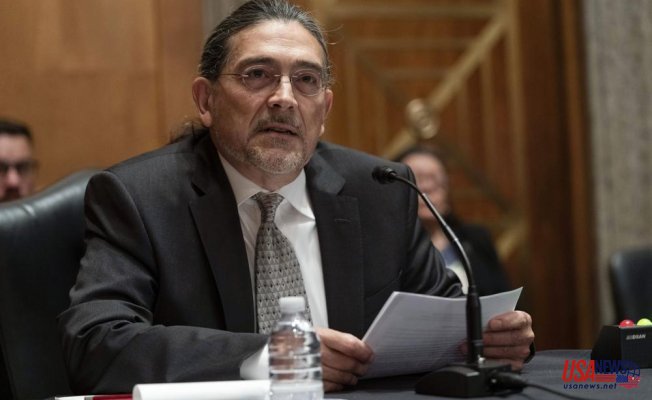Since the U.S. Census Bureau released this month, policymakers and demographers have been asking the same question. The results showed that Black, Hispanic and other minorities were undercounted at higher rates in 2020 than the previous decade.
A version of the most comprehensive survey, which compares year to year changes in U.S. lives, was largely scrapped due to fewer responses from 2020 because of disruptions caused in part by the pandemic.
Arturo Vargas is the CEO of NALEO Educational Fund. This nonpartisan nonprofit supports Latino political engagement.
While the undercounts in 2020 Census were attributed to natural disasters, pandemics, and political interference by the Trump administration, undercounts of racial or ethnic minorities are not new to the census. They have been a problem for decades.
The cost of surveys and censuses has increased in recent years while the public participation rate for surveys has declined. The largest between-census effort of the bureau to measure the U.S. population is the American Community Survey. It produces 11 billion statistics each year from interviews with 3.5million households. This once-a-decade count counts every U.S. resident, which is used in the division of federal funding and the redrawing of political districts.
Ron Jarmin, who was the Census Bureau's chief operating officer, stated that "what we have today largely" is still a survey-centric, 20th century statistical system. He made these remarks last December while he was acting as the agency director.
The Census Bureau was already working on new methods of collecting data even before the publication of the 2020 report card. The most important of these is the embryonic Frames Program, which would combine data from all sectors, including administrative records from government agencies and surveys that have been a staple of Census Bureau data-gathering over the decades.
The concept would link one data set, such as an individual’s IRS file, to another such as the individual’s Census Bureau survey response. Data related to addresses, demographics and businesses, as well as jobs, would eventually be linked together.
The program could count people with good administrative records and links to other records in 2030. More resources could also be devoted to households that are difficult to count, Robert Santos, Census Bureau Director, said in a recent interview to The Associated Press.
"We are looking for ways to make the most of technology. That means combining large databases of people. Not to create Big Brother societies, but to augment and reduce the burden on our populations when it comes to gathering data." Santos was appointed by President Joe Biden.
Relying solely on administrative records can lead to problems, as some groups, like illegal immigrants, may not have a paper trail.
The Trump administration not only named a high number of political appointees at the Census Bureau, but also attempted unsuccessfully to use administrative records to compile a list of illegal immigrants to be removed from the count that was used to allocate congressional seats.
Paul Ong, an emeritus professor of urban studies at UCLA, stated that any attempt to reform the count will need to be protected against similar attempts to misuse it for political purposes.
Ong stated that the 2020 census was a wakeup call. "The Census Bureau plays a fundamental and very important role in our society. It is the keeper and securing of our demographic truths.
Terri Ann Lowenthal is a former congressional staffer and specializes in census issues. She worries that a greater dependence on administrative records at cost of public participation will make it less engaging for all Americans, regardless of their backgrounds.
Lowenthal stated that "if you live in a millionaire’s mansion, or in a tent underneath a bridge you matter to the census."
The Census Bureau is a pioneer in data collection and processing. It used punch cards and electronic tabulators at end of 19th century, and employed the first civilian agency-owned computer for the 1950 census. It tried many new methods for the 2020 census.
The internet was used for the first time to answer the census questionnaire. In addition, the 2020 census was also the first to use administrative records of places like the Social Security Administration for filling in the data gaps for households who didn't respond. Bureau statisticians are also blending data from other sources with census data to create annual population estimates.
Lowenthal stated that the Census Bureau could increase the accuracy of undercounted communities if Congress allowed it to use a statistical technique that adjusts population counts to compensate for undercounts. This statistical tool was banned for the purpose of dividing the congressional seats between the states for over two decades.
Allison Plyer, chief deographer at The Data Center in New Orleans, stated that outreach to underserved communities and consistent funding from Congress are also important.
Plyer, who was formerly the chair of the bureau’s scientific advisory board, said that there is no silver bullet. "All of these elements must work in concert."












